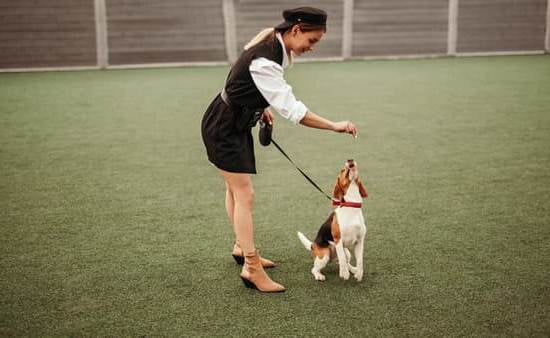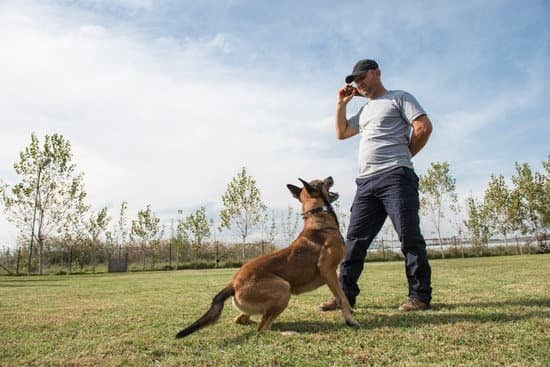Therapy dogs play a crucial role in providing comfort, support, and companionship to individuals in various settings such as hospitals, nursing homes, schools, and disaster areas. These specially trained canines have the unique ability to bring joy and relief to people going through challenging times. In this article, we will delve into the process of starting the training for a therapy dog, from understanding the characteristics of a good candidate to advancing to more complex training techniques.
When embarking on the journey of training a therapy dog, it is important to first identify the key attributes that make a dog suitable for this role. Traits such as calmness, sociability, obedience, and gentle temperament are essential qualities to look for in a potential therapy dog candidate. Additionally, finding the right dog with these characteristics is crucial before delving into the training process.
Understanding the basics of dog training is fundamental before initiating therapy dog training. Positive reinforcement techniques, consistency, patience, and clear communication are some of the key principles that form the foundation of successful dog training. By establishing a strong bond with your canine companion through basic obedience training, you pave the way for more advanced therapy dog training techniques in the future.
Benefits of Having a Therapy Dog
Therapy dogs are specially trained to provide comfort, affection, and support to individuals in various settings such as hospitals, nursing homes, schools, and disaster areas. The benefits of having a therapy dog are numerous and invaluable. These furry companions can help reduce stress, anxiety, and feelings of loneliness for those they interact with. Additionally, therapy dogs have been known to improve overall mood and emotional well-being.
One of the key characteristics of a good therapy dog candidate is a calm and friendly demeanor. They should also be comfortable around different people, including children and the elderly. If you’re considering getting your dog involved in therapy work, it’s important to first assess whether they possess these traits.
To start the training for a therapy dog, it is essential to lay down a strong foundation in basic obedience skills. This includes commands such as sit, stay, come, and walking on a leash without pulling. Positive reinforcement techniques like treats or praise can be used to encourage desired behaviors. Consistency in training sessions is key to ensuring that your dog understands what is expected of them.
| Benefits of Therapy Dogs | How to Start Training for a Therapy Dog |
|---|---|
| Reduces stress, anxiety, and loneliness | Assessing your dog’s temperament for suitability |
| Improves mood and emotional well-being | Establishing basic obedience skills through positive reinforcement |
Characteristics of a Good Therapy Dog Candidate
When considering training a therapy dog, it is crucial to first identify the key characteristics that make a good candidate for this role. Therapy dogs play a vital role in providing comfort, companionship, and emotional support to individuals in various settings such as hospitals, nursing homes, schools, and rehabilitation centers. A successful therapy dog candidate must possess specific traits that will enable them to excel in this important role.
Here are some essential characteristics to look for when selecting a dog for therapy training:
- Temperament: A good therapy dog candidate should have a calm and gentle temperament. They should be friendly, patient, and enjoy human interaction.
- Socialization: The dog should be well-socialized and comfortable being around different people, including children, the elderly, and individuals with disabilities.
- Adaptability: A successful therapy dog must be able to adapt to different environments and situations calmly and confidently.
These qualities are essential in ensuring that the therapy dog can effectively engage with those they are providing comfort to. It is important to remember that not all dogs may possess these traits naturally but can still be trained to become exceptional therapy dogs through proper training and socialization. Now let’s explore how to start the training for a therapy dog.
- Research and Educate Yourself: Before embarking on training your dog for therapy work, it is essential to educate yourself on the requirements and expectations of a therapy dog. Understanding the fundamentals of canine behavior and learning about positive reinforcement training techniques will set you up for success
- Consult with Professionals: Seek guidance from experienced trainers or organizations specializing in therapy dog training. They can provide valuable insights into the specific skills and behaviors needed for successful therapy work
- Start with Basic Obedience Training: Building a strong foundation through basic obedience training is crucial before advancing to more complex tasks. Focus on commands such as sit, stay, come, and leash manners
By starting with these foundational steps, you can set your therapy dog candidate on the right path towards becoming a reliable source of comfort and support for those in need.
Finding the Right Dog for Therapy Training
When considering how to start the training for a therapy dog, one of the first steps is finding the right dog for therapy training. Not all dogs are suitable for this role, so it’s essential to choose a candidate with the right characteristics. Ideally, a therapy dog candidate should be friendly, sociable, and have a calm demeanor. They should be comfortable around different people and in various environments to ensure they can handle the demands of therapy work.
When looking for a dog for therapy training, it is crucial to consider their breed, age, and individual temperament. Some breeds are naturally more inclined towards being good therapy dogs due to their gentle nature and sociability.
Additionally, younger dogs may be easier to train and acclimate to new situations, but older dogs can also excel with the right training and guidance. Ultimately, it’s important to assess each dog as an individual and select one that shows potential for success in therapy work.
In addition to assessing a dog’s temperament and characteristics, it’s also essential to consider their health and physical condition. A therapy dog must be in good health to effectively perform their duties.
Regular veterinary check-ups, proper nutrition, exercise, and grooming are key components of maintaining a healthy therapy dog. By carefully selecting a dog with the right qualities and taking care of their physical well-being, you can set the foundation for successful therapy training and ultimately make a positive impact through animal-assisted interventions.
Understanding the Basics of Dog Training
Positive Reinforcement Training
One of the fundamental aspects of training a therapy dog is understanding the basics of dog training, particularly the concept of positive reinforcement. Positive reinforcement involves rewarding your dog with treats, praise, or toys when they exhibit desirable behaviors.
This method strengthens the bond between you and your dog and encourages them to repeat those good behaviors. When starting the training for a therapy dog, it is essential to focus on positive reinforcement techniques to create a positive learning environment for your furry friend.
Consistency and Patience
Consistency and patience are key when training a therapy dog. Dogs thrive on routine and clear expectations, so it is crucial to set consistent rules and boundaries during training sessions. Additionally, patience is vital as dogs may not learn commands immediately or may struggle with certain tasks.
Remember that each dog learns at their own pace, so be patient and supportive throughout the training process. Starting with simple commands and gradually increasing difficulty can help build your dog’s confidence and skills over time.
Understanding Your Dog’s Needs
Every dog is unique, with individual personalities, strengths, and weaknesses. To effectively train a therapy dog, it is essential to understand your dog’s needs and preferences. Pay attention to their body language, reactions to different stimuli, and energy levels during training sessions.
By taking the time to understand your dog on a deeper level, you can tailor your training approach to suit their specific requirements. Adapting your training methods based on your dog’s personality can lead to more successful outcomes in preparing them for their role as a therapy dog.
Getting Started With Basic Obedience Training
Basic obedience training is the foundation for all therapy dog training. It is essential to establish good behavior and manners in your dog before moving on to more advanced therapy dog training techniques. To start the training for a therapy dog, focus on teaching basic commands such as sit, stay, come, and heel. Use positive reinforcement like treats or praise to encourage your dog to learn and obey these commands.
Consistency is key when it comes to basic obedience training. Make sure to practice regularly with your dog in short but frequent sessions. This will help reinforce learning and prevent your dog from getting bored or losing interest. Remember to be patient and understanding with your furry companion as they navigate through the learning process.
In addition to basic commands, socialization is also an important aspect of basic obedience training for therapy dogs. Expose your dog to different environments, people, and animals to help them become comfortable and confident in various settings. This will be crucial when it comes time for your therapy dog to interact with patients or clients in hospitals, nursing homes, schools, or other facilities where therapy dogs are needed.
Advancing to More Complex Therapy Dog Training Techniques
Introducing Advanced Training Techniques
Once your therapy dog has mastered basic obedience commands and is comfortable around different environments and individuals, it’s time to introduce more complex training techniques. These advanced training methods can help your therapy dog be better prepared for the various situations they may encounter during their sessions. Some advanced techniques include role-playing scenarios, desensitization exercises, and handling distractions.
Role-Playing Scenarios
One way to advance your therapy dog’s training is to create role-playing scenarios that mimic real-life situations they may face during therapy visits. This can include simulating hospital or nursing home environments, practicing interacting with individuals in wheelchairs or using medical equipment, and working on staying calm in busy or noisy settings. By incorporating these scenarios into your training sessions, you can help your therapy dog become more confident and comfortable in any situation.
Desensitization Exercises
Another important aspect of advancing your therapy dog’s training is desensitization exercises. These exercises involve gradually exposing your dog to different stimuli that they may encounter during therapy visits, such as loud noises, sudden movements, or unfamiliar scents.
By slowly introducing these stimuli in a controlled environment and rewarding positive behavior, you can help your therapy dog learn to remain calm and focused regardless of external distractions. Desensitization exercises are crucial for preparing your dog for the unpredictable nature of therapy work.
By incorporating role-playing scenarios, desensitization exercises, and other advanced training techniques into your therapy dog’s regimen, you can ensure that they are well-prepared to handle the challenges of their important work. Always remember to be patient and consistent with your training efforts, as building a strong foundation is essential for success in therapy dog work.
With dedication and practice, you can continue to enhance your dog’s skills and make a positive impact on the lives of those in need.
Certification and Registration Process for Therapy Dogs
When it comes to getting your therapy dog officially certified and registered, there are specific steps and guidelines that need to be followed. This process is important not only for the safety and well-being of the individuals your therapy dog will interact with but also for legal reasons. Here is a guide on how to go about the certification and registration process for therapy dogs:
- Research Accredited Organizations: The first step in certifying your therapy dog is to research and find accredited organizations that offer therapy dog certification programs. These organizations have specific requirements and guidelines that must be met in order to ensure your dog is well-trained and suitable for therapy work.
- Complete Required Training Programs: Once you have identified a reputable organization, you will need to enroll your dog in their training program. These programs typically cover topics such as temperament evaluation, obedience training, socialization skills, and behavioral assessment. It’s important to follow the program diligently to ensure your dog meets all the necessary criteria.
- Schedule Evaluation Sessions: After completing the required training, your therapy dog will need to undergo evaluation sessions conducted by certified professionals from the organization. During these sessions, your dog’s behavior, obedience, and overall suitability for therapy work will be assessed. If your dog successfully passes these evaluations, you can proceed with the certification process.
Remember that each organization may have its own specific requirements for certification, so make sure to thoroughly review their guidelines before starting the training for a therapy dog.
Maintaining and Enhancing Your Dog’s Skills as a Therapy Dog
Once your dog has completed the necessary training to become a therapy dog, it is crucial to continue working on maintaining and enhancing their skills. Consistent practice and reinforcement are key to ensuring that your therapy dog performs well in various settings and with different individuals. Regular training sessions will help keep your dog sharp, focused, and responsive to commands.
To maintain your therapy dog’s skills, it is important to continue practicing basic obedience commands such as sit, stay, come, and heel. These commands form the foundation of your dog’s training and should be reinforced regularly. In addition to basic obedience training, engage your therapy dog in activities that simulate real-life therapy situations. This could include practicing walking on different surfaces, encountering loud noises or distractions, and interacting with strangers in a controlled environment.
Enhancing your therapy dog’s skills can involve introducing more advanced training techniques such as desensitization exercises, scent work, or agility training. These activities not only challenge your dog mentally and physically but also help build confidence and strengthen the bond between you and your furry companion. Remember to always keep training sessions positive and rewarding for your therapy dog to maintain their motivation and enthusiasm for working as a therapy animal.
| Tip | Benefit |
|---|---|
| Consistent practice | Keeps the dog sharp and responsive |
| Engage in real-life simulation | Prepares the dog for actual therapy sessions |
| Introduce advanced techniques | Challenges the dog mentally |
Resources and Support for Therapy Dog Owners and Handlers
In conclusion, starting the training for a therapy dog can be a rewarding and fulfilling journey for both you and your canine companion. By understanding the benefits of having a therapy dog and recognizing the traits of a suitable candidate, you can begin the process of finding the right dog for therapy training. The key to success lies in grasping the basics of dog training and progressing from basic obedience to more advanced techniques.
As you embark on this training journey, it is essential to seek resources and support to guide you along the way. From certification and registration processes to maintaining and enhancing your dog’s skills as a therapy dog, there are various organizations and professionals available to assist you. These resources can provide valuable insights, tips, and advice on how to nurture your therapy dog’s abilities effectively.
Ultimately, becoming a therapy dog owner or handler requires dedication, patience, and a genuine desire to make a positive impact on others. With the right tools, knowledge, and support system in place, you can successfully navigate the training process and help your furry friend become a certified therapy dog.
Remember that every step taken towards training your therapy dog contributes not only to their development but also to the well-being of those they will eventually assist and comfort in various settings.
Frequently Asked Questions
How Do I Train My Dog to Be a Therapy Dog?
Training a dog to be a therapy dog involves teaching them obedience, socialization, and specific skills needed for interacting with different people. Positive reinforcement methods are usually used to encourage desired behaviors, along with exposing the dog to various environments and situations.
It’s important to work with a reputable trainer or organization that specializes in therapy dog training to ensure your dog is well-prepared.
What Is the Best Age to Train a Therapy Dog?
The best age to train a therapy dog can vary depending on the breed and individual characteristics of the dog. Generally, starting training when the dog is still a puppy is beneficial as it allows for early socialization and habituation.
However, older dogs can also be trained successfully as long as they are healthy, have the right temperament, and are willing to learn. Ultimately, any age can be suitable for training if the dog has the right qualities.
Can You Make Money With a Therapy Dog?
Making money with a therapy dog is possible but not common. Some organizations or facilities may offer financial compensation for therapy dog visits, especially in settings like hospitals or nursing homes.
Additionally, some therapy dogs participate in programs where their owners receive reimbursement for expenses incurred during visits. However, most people who own therapy dogs do so for the joy of helping others rather than financial gain.

Welcome to the blog! I am a professional dog trainer and have been working with dogs for many years. In this blog, I will be discussing various topics related to dog training, including tips, tricks, and advice. I hope you find this information helpful and informative. Thanks for reading!





